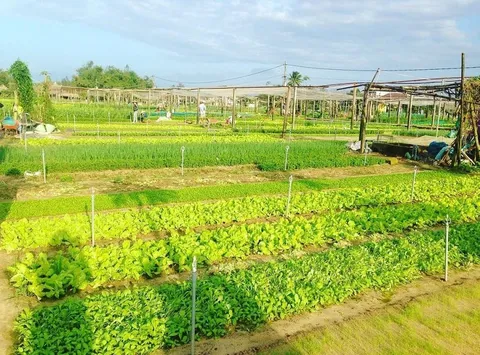Vegetable Cultivation In Tra Que Village Exploring Folk Knowledge
In a retrospective way, at the latest of the Nguyen Dynasty period (16th -18th century), this vegetable was famous in Dang Trong.
In a retrospective way, at the latest of the Nguyen Dynasty period (16th -18th century), this vegetable was famous in Dang Trong.
Over many generations, with traditional methods, cultivation experience, and diligence, the vegetable products of the Tra Que people have an incomparable taste. That is the reason why vegetable cultivation in Tra Que attracts many tourists to come and explore.
1. BEST TIME TO SEE THE VILLAGE
Standing in the middle of a natural vegetable picture with many colors and flavors, people can enjoy a poetic and peaceful space of Hoi An village, we can see girls with graceful smiles in the beds of vegetables diligently harvesting fresh vegetables for the morning market.
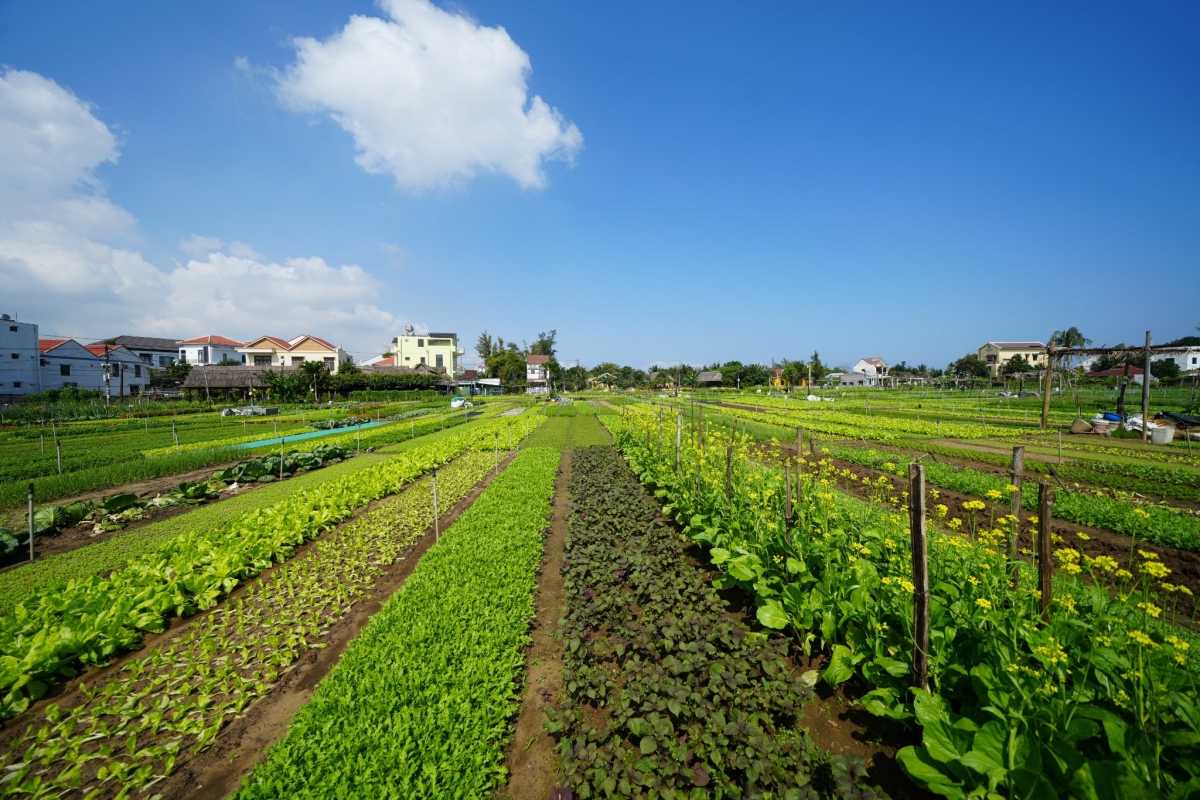
Tra Que Vegetable Village (Image: Internet).
Vegetables that can be grown all year round are basil, fragrant knotweed, white basil, sweet basil, chive, Gynura Acutifolia, water morning glory, sweet potato leaves, and bitter herb,… For Winter -Winter and Spring crops, farmers produce choy sum, lettuce, basil, spring onion, chive, etc. For Summer – Summer and Autumn crops, farmers mainly grow flagrant knotweed, basil, white basil, sweet basil, perilla, etc.
Each vegetable has its own form and flavor. Tra Que vegetables have small and fragrant leaves. According to vegetable growers, the reason why the vegetable leaves are small and fragrant is from the soil and fertilizing form in this area.
Some typical vegetables that you should taste in Tra Que are Basil, White basil, watercress, chive, etc.
2. SUITABLE VEGETABLES FOR CROPS IN THE YEAR
Sweet Leaf ( Bồ ngọt / Ngót / Bù Ngọt )
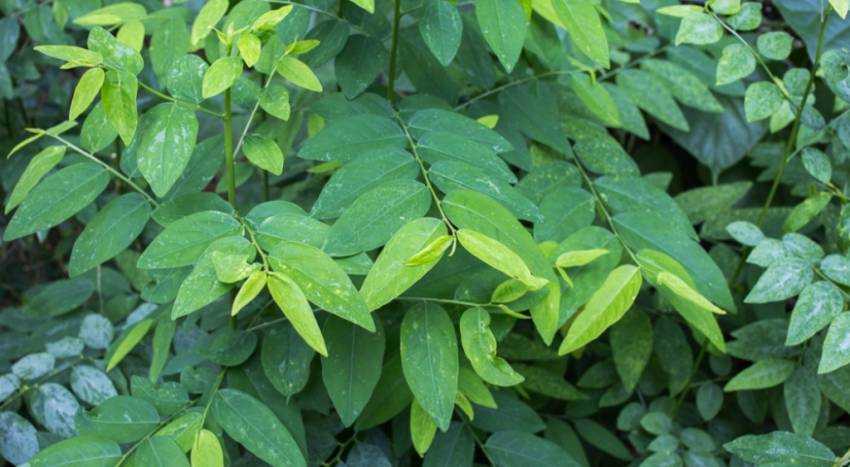
Sweet Leaf ( Bồ ngọt / Ngót / Bù Ngọt )
This vegetable is odorless with green leaves. It is used to cook soup with an antifebrile effect, treating retained placenta, and hairy tongue disease.
Mustard Green ( Cải bằng )
Water Cress ( Cải con )
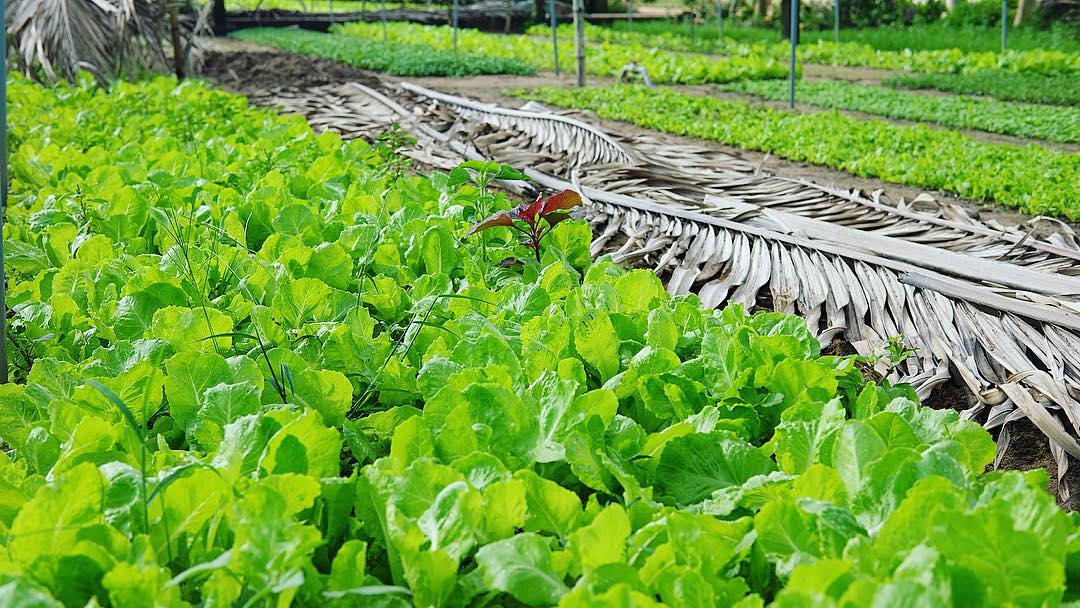
Water Cress ( Cải con )
This vegetable has light green leaves with round leaf bases and long tips. It is odorless and has a white stem. It is a part of raw vegetables and an indispensable ingredient of the Vietnamese crepe.
Baby Mustard ( Cải mầm )

Baby Mustard
It has two leaves in the shape of petals and a white stem. We can use it like a medicine to prevent stomach cancer.
Choy sum ( Cải ngọt )
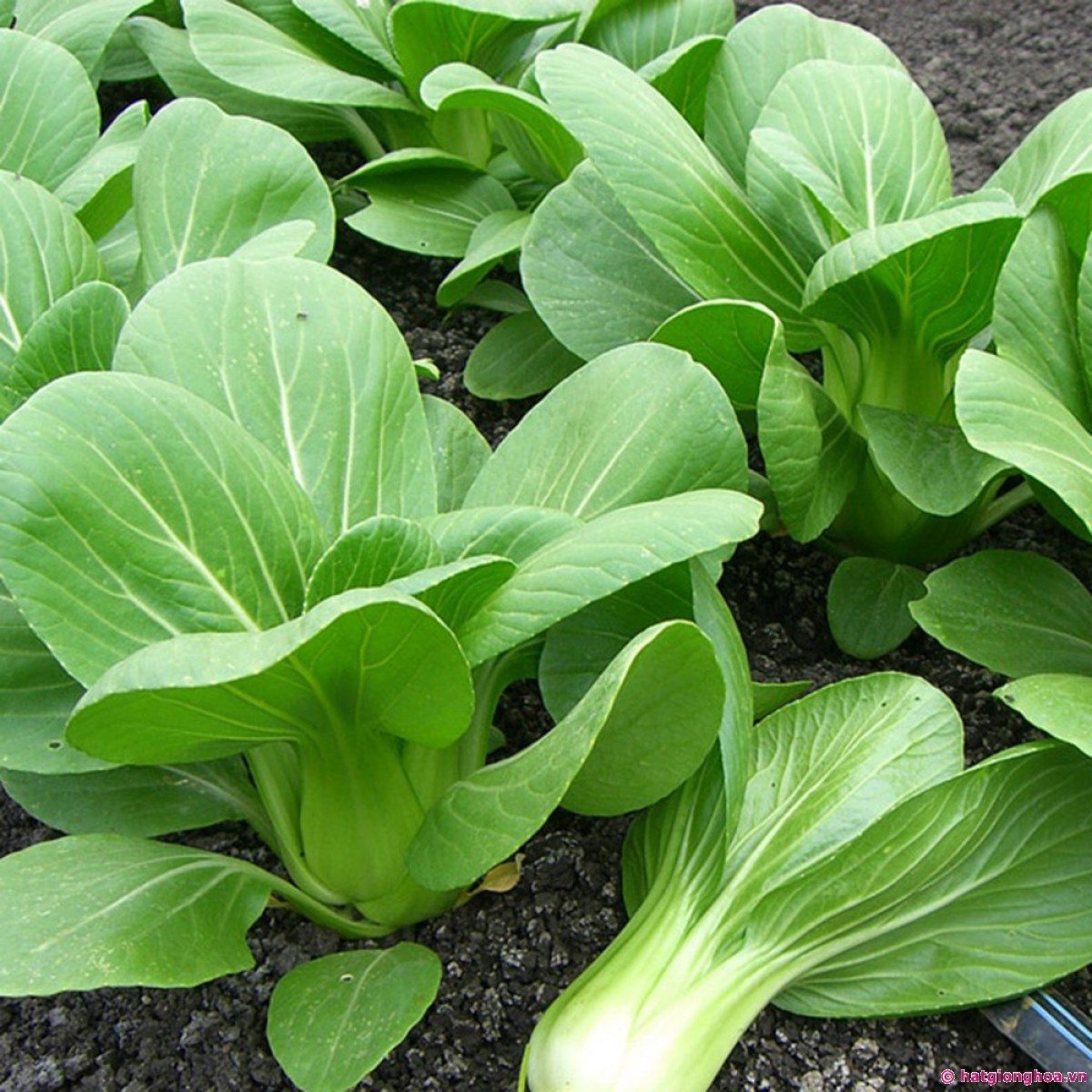
Choy sum
This vegetable has green leaves and long and white stems. It is used to cook soup and make stir-frying dishes.
Glinus Oppositifolius / Bitter Herb ( Rau đắng )

Bitter Herb
This herb has a bitter taste, with green leaves and stems creeping on the ground. It can be eaten raw or used to cook soup and has a diuretic effect and is helpful to detoxify and treat snakebites, pimples, jaundice, and blood disease in women.
White Basil ( Rau é )
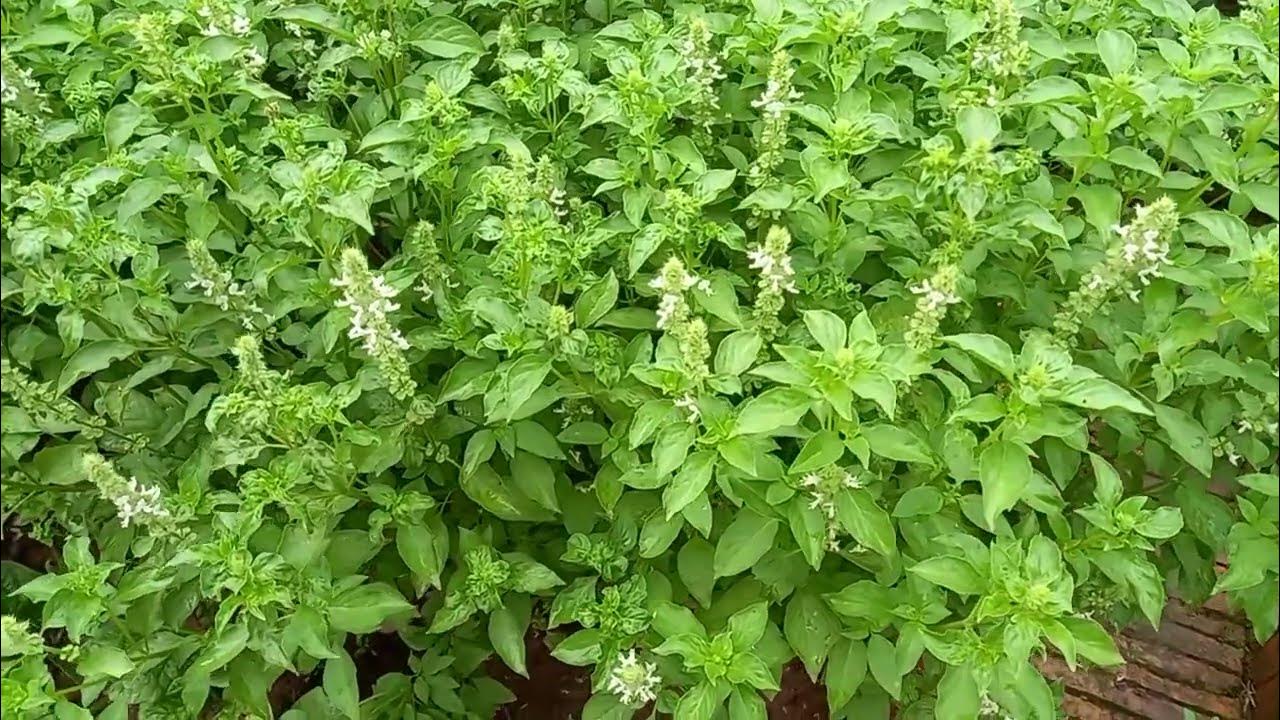
White Basil
This vegetable has light green leaves. Its smell is similar to citronella with a spice taste, it is a part of raw vegetables. Every year in November, or December, if there is rain, the vegetable will be easily killed. We can make a delicious beverage by soaking white basil seeds.
Chive ( Hẹ )

Chive
This vegetable has green and long leaves and grows in clusters with many roots. It can be eaten raw and stir-fried with a pig’s tail to treat cough. Eating this vegetable helps treat dysentery, and support digestion.
Basil with long leaves ( Húng dài )
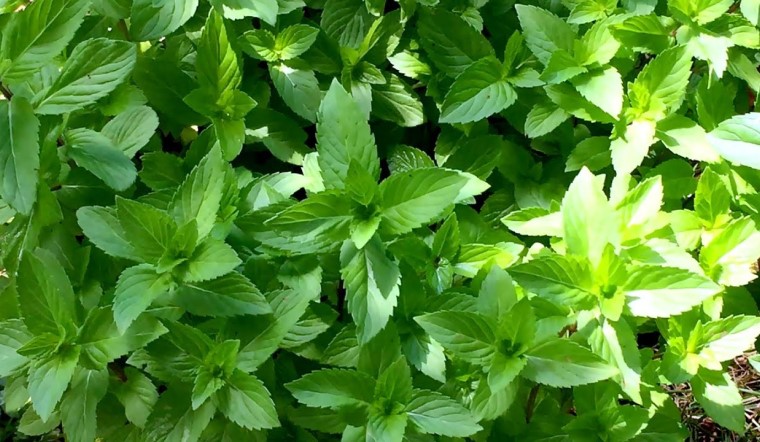
Basil with long leaves
This vegetable has round and slightly white leaves. Its smell is similar to white basil. It is a part of raw vegetables and is used to make salad. It has now lost its variety.
Basil with round leaves ( Húng tròn )
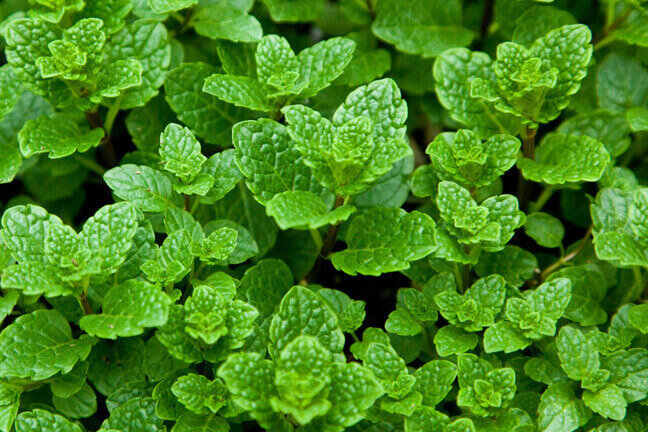
Basil with round leaves
This vegetable has green, round leaves, and purple stems with aroma and spicy taste. It can be served in salad and used as a herb in dishes.
Sweet Potato Leaves ( Rau lang )
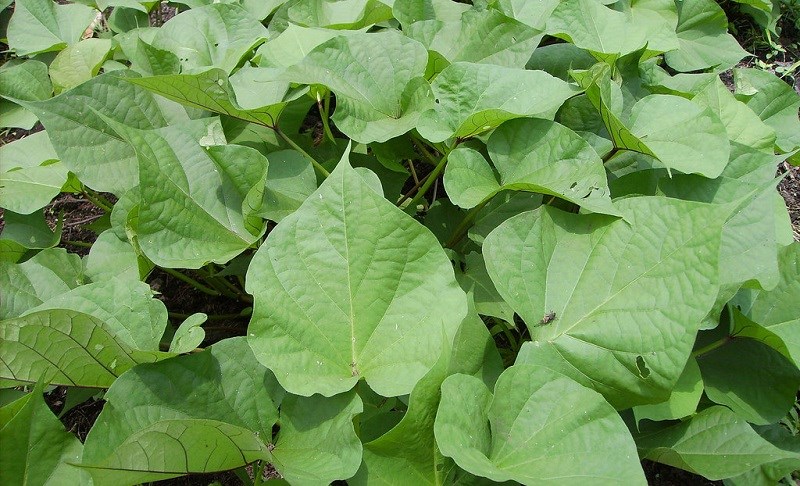
Sweet Potato Leaves
This vegetable has green, long, and round leaves with soft creeping stems.
Piper Lolot ( Lá lốt )
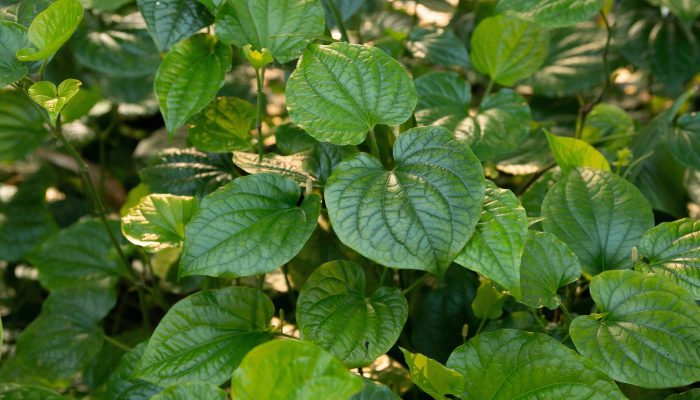
Piper Lolot
The leaves are dark green and oval, there are seven veins that originate from the leaf base and spread outwards towards the leaf margin. The upper surface of the leaf is smooth, and its underside is slightly hairy. Its stem is hard with nodes from which the leaves grow. It is used as a herb in dishes.
Gynura Acutifolia ( Lủi )
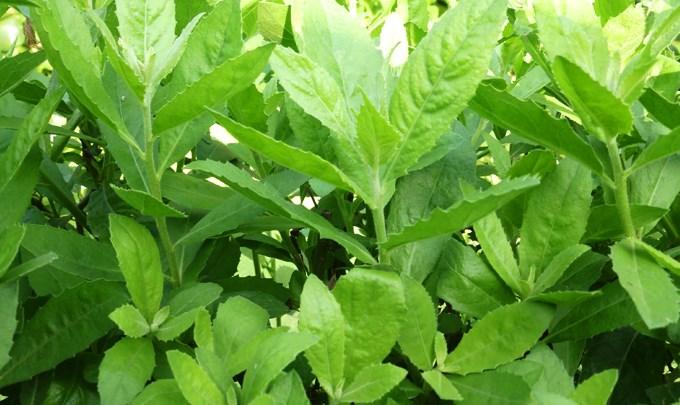
Gynura Acutifolia
It is odorless with a slightly sour taste and is used to cook soup.
Water Morning Glory ( Rau muống )
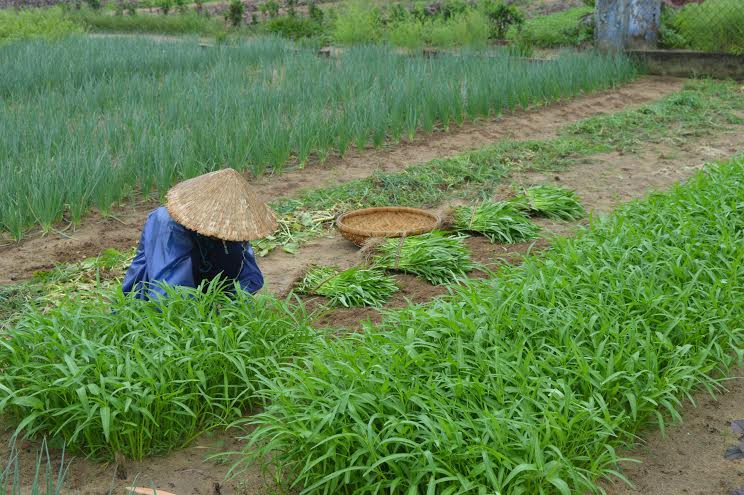
Water Morning Glory
The vegetable is odorless and has green leaves, with soft, long, and crispy stems.
Ocimum Basilicuml / Sweet Basil ( Rau Quế )

Ocimum Basilicuml
This vegetable has green leaves and hard stems with reddish-purple color. It is about 50 – 60 cm high and has white and purple flowers growing in clusters. It is aromatic, spicy, and used as a herb which is an indispensable ingredient of blood pudding dishes. Its seeds can be used to make a beverage that helps cure constipation.
Laksa Leaves ( Rau răm )
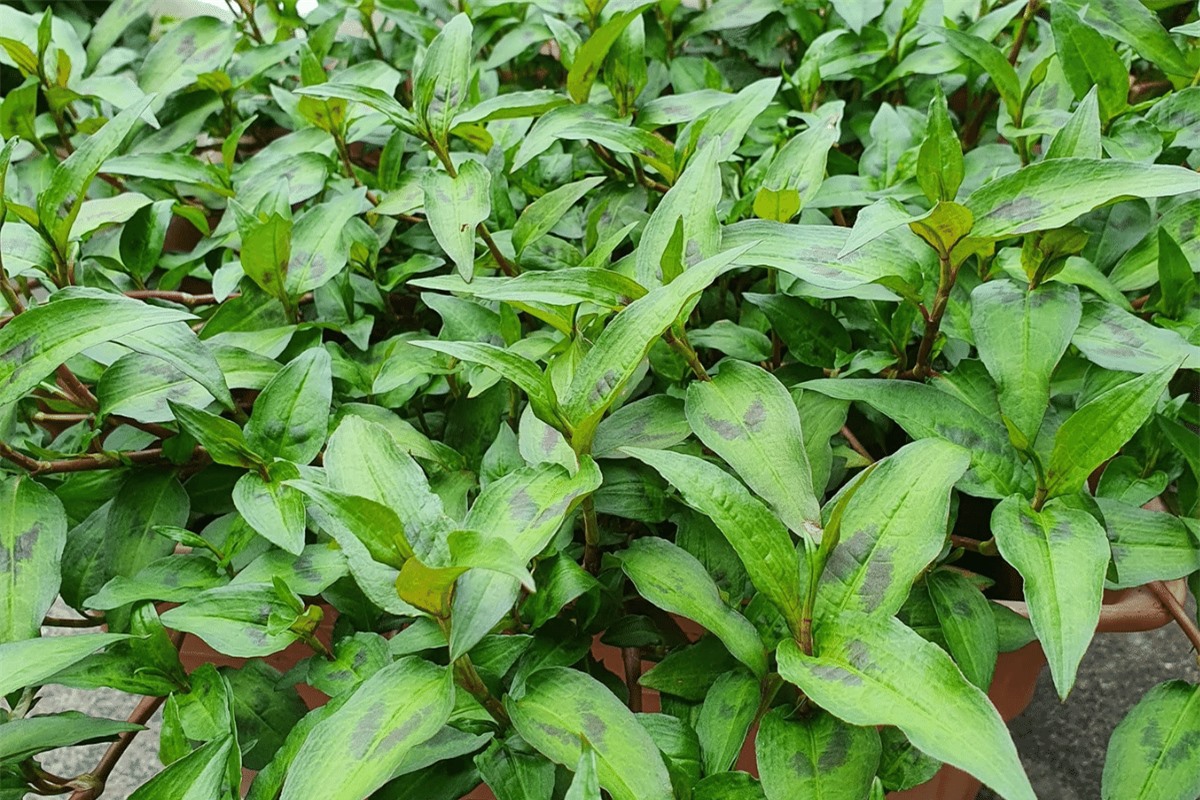
Laksa Leaves
It is a creeping plant with green leaves and red stems. Many roots grow from each node of the stem. It has a spicy taste and a strong aroma. It can be eaten raw or with chicken and balut and used to cook fish soup. This vegetable has the effect of disinfecting and stimulating digestion.
Lemongrass ( Sả )
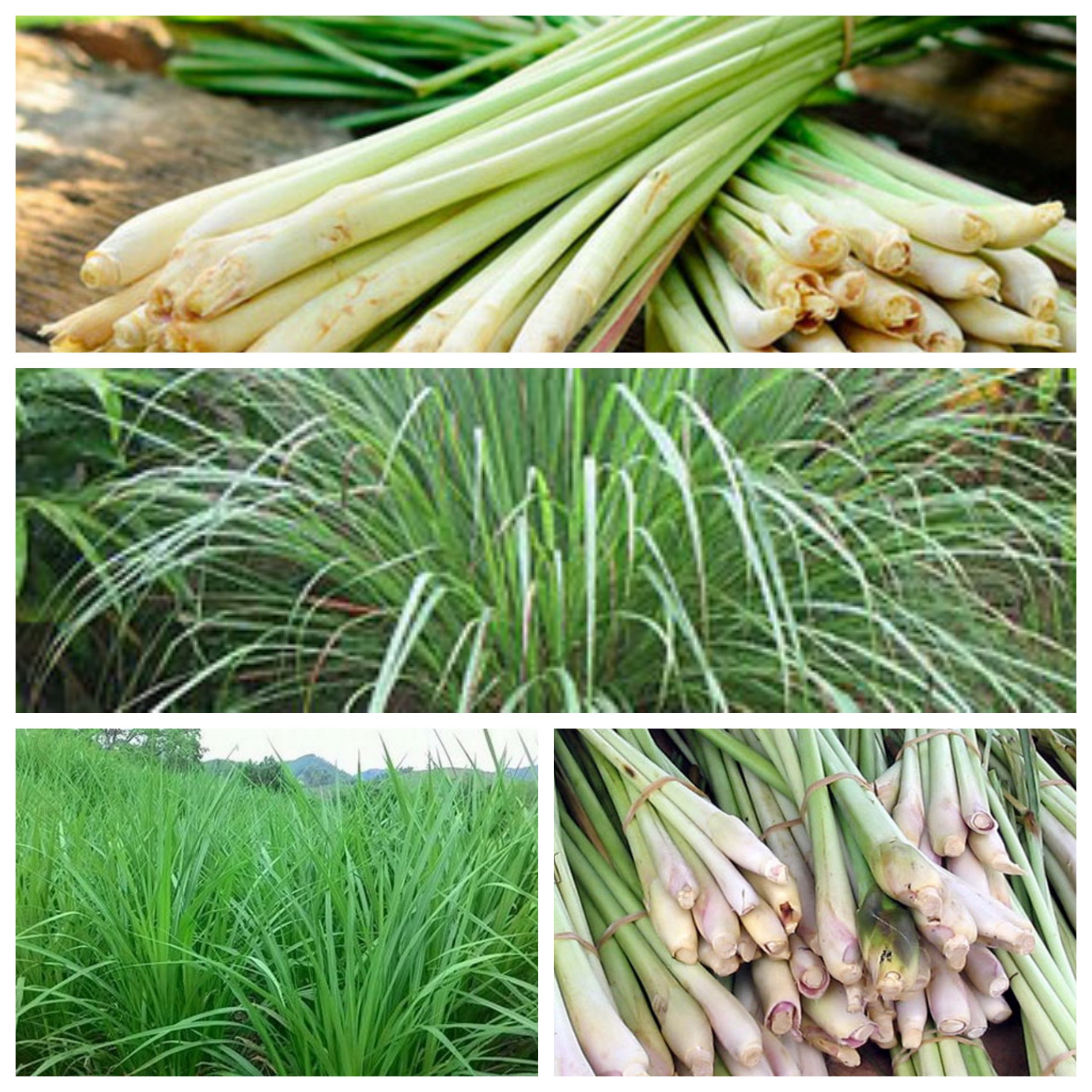
Lemongrass
This vegetable has green. narrow and long leaves which are similar to rice leaves. Their edges have thorns, It has a white set and root growing into a clump. This vegetable can cure flu, and sweaty hands, Improve digestion and urination.
Lettuce ( Xà lách )
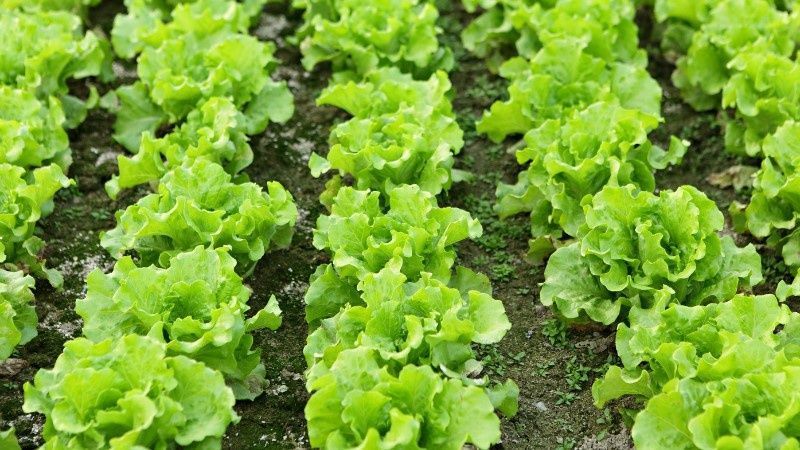
Lettuce
This vegetable has green and wavy leaves. It is odorless and very crispy to eat uncooked, a local variety of vegetables. It helps improve the intestinal system.
Iceberg Lettuce ( Xà lách búp )
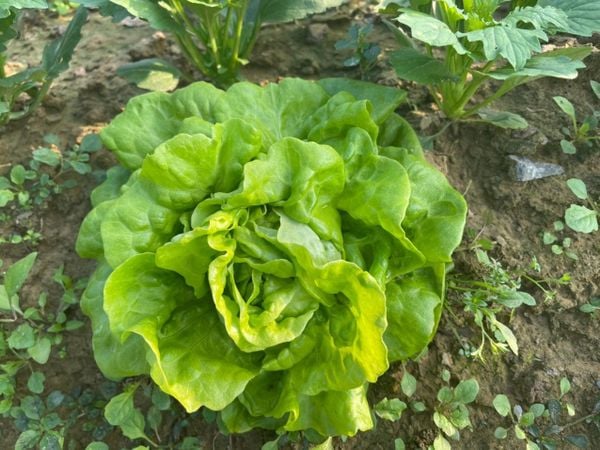
Iceberg Lettuce
This vegetable has green leaves curling into buds. It is odorless and very crispy to eat uncooked.
Pink Lettuce ( Xà lách son )
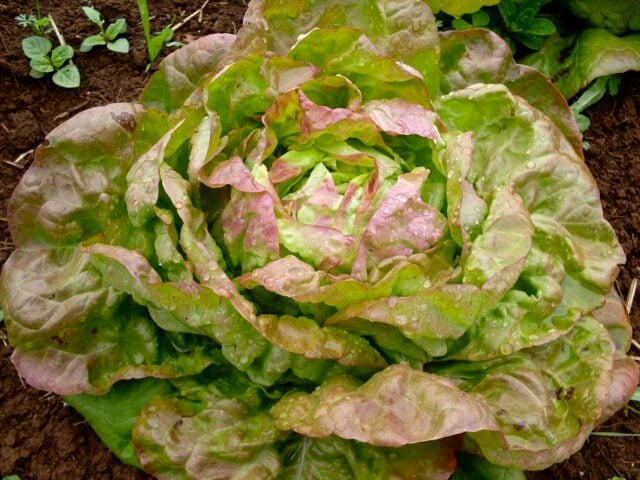
Pink Lettuce
Its leaves are similar to Pennywort’s leaves, with pink color. It is odorless and very crispy to eat uncooked. This vegetable has now lost its variety.
3. SUITABLE PLANTS AND VEGETABLES FOR WINTER-WINTER AND SPRING CROP
Bok choy ( Cải bẹ trắng / Cải muỗng )

Bok choy
This vegetable has green and round leaves with long and white stalks. It is odorless and used to stir-fry and cook soup.
Celery ( Rau cần )
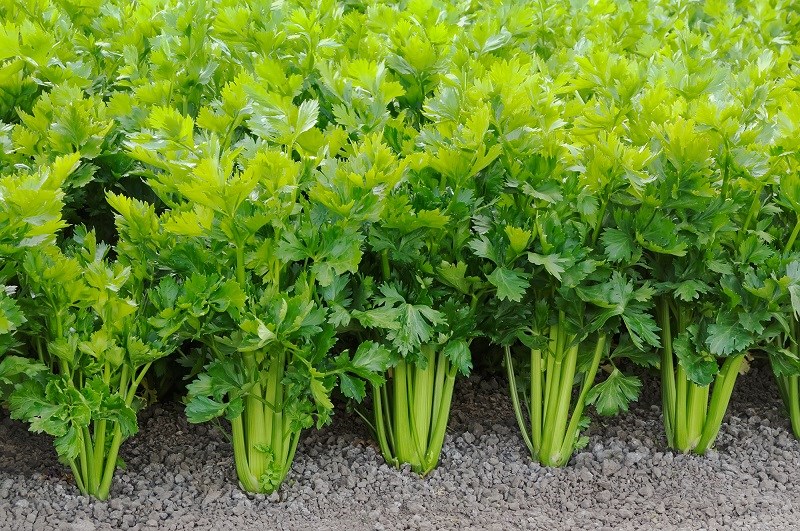
Celery
This vegetable has light green leaves with many branches. Leaves have 3 lobes with stalks and the smell of Chinese medicine. We use celery to stir or cook soup and can cure high blood pressure.
Fish Mint ( Diếp cá )
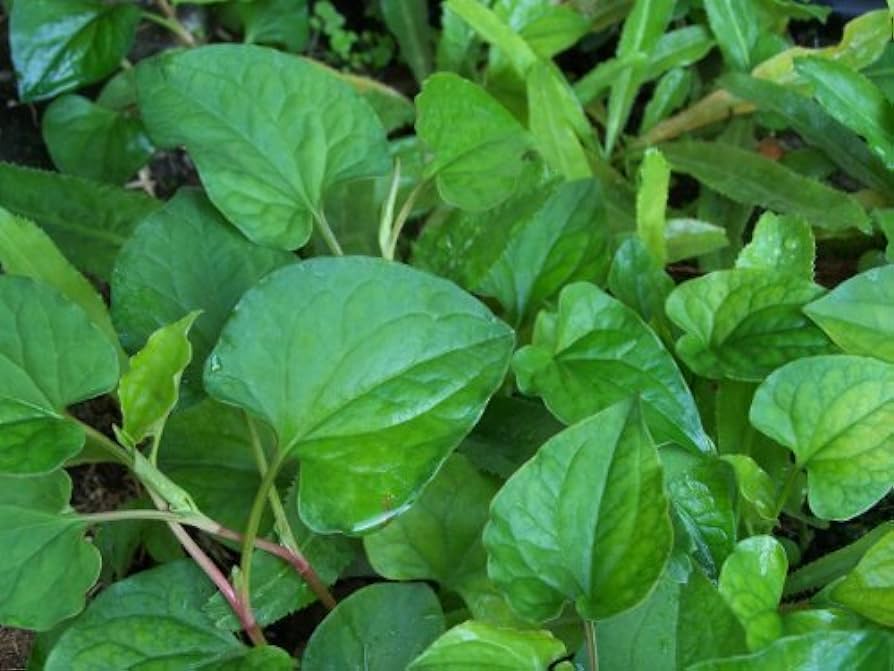
Fish Mint
This vegetable has green leaves and purple stems. Its roots grow from nodes. Fish mint has sour and fishy tastes. We can eat it raw. We can use it as a medicine for eye pain, hemorrhoids, urination, pimples, and hair removal.
Spring Onion ( Hành hương )
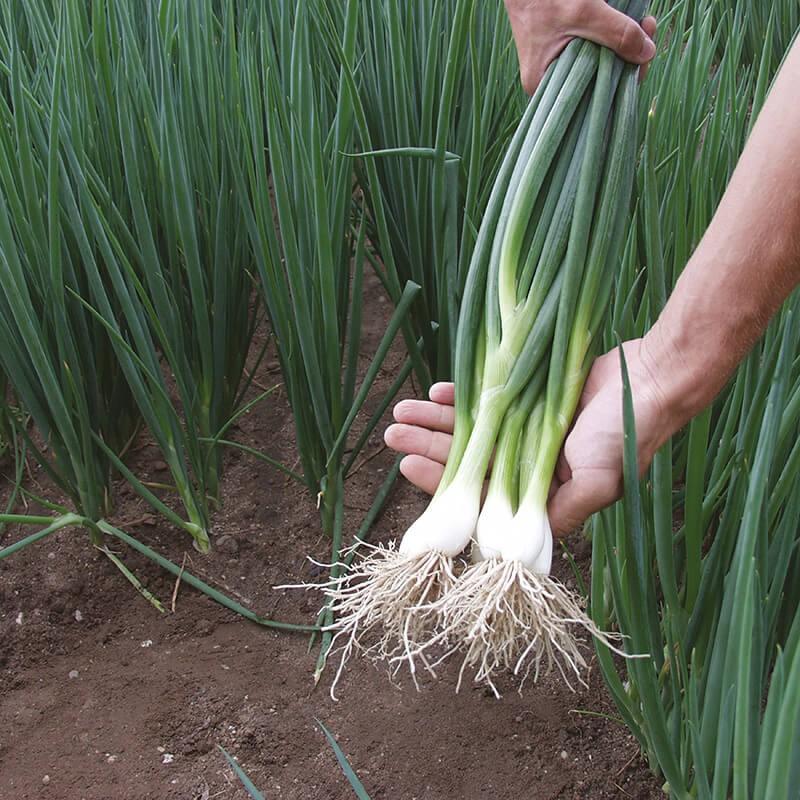
Spring Onion
This vegetable has white tubers and green tubular-shaped leaves. It has a spicy taste and a strong aroma. It can cure fever.
4. SUITABLE VEGETABLES FOR SUMMER-SUMMER AND AUTUMN CROP
Choy Sum ( Cải bẹ xanh )

Choy Sum
This vegetable has green and big leaves with serrated edges. Its stems are flat and light green. We can use this green for boiling or salting.
Red Amaranth ( Dền đỏ )
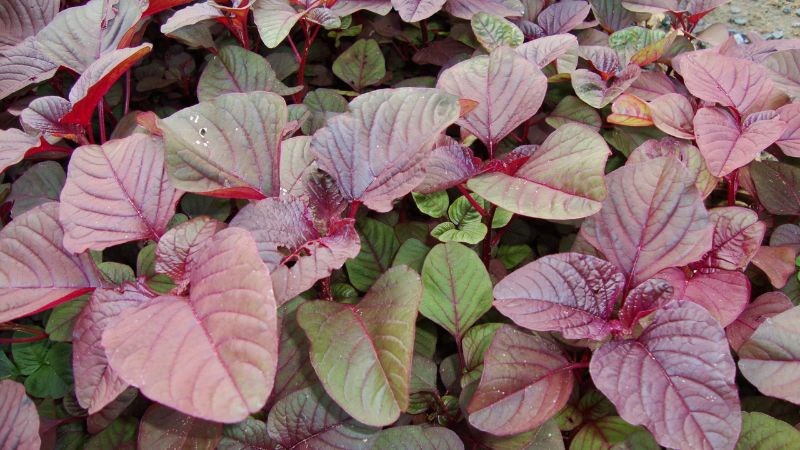
Red Amaranth
This herb has purple-red leaves and stems. It is odorless, slightly acidic, and used to boil, and cook soup. Eating this vegetable is very good for the blood.
Jute Plant / Jute Leaves ( Đay )
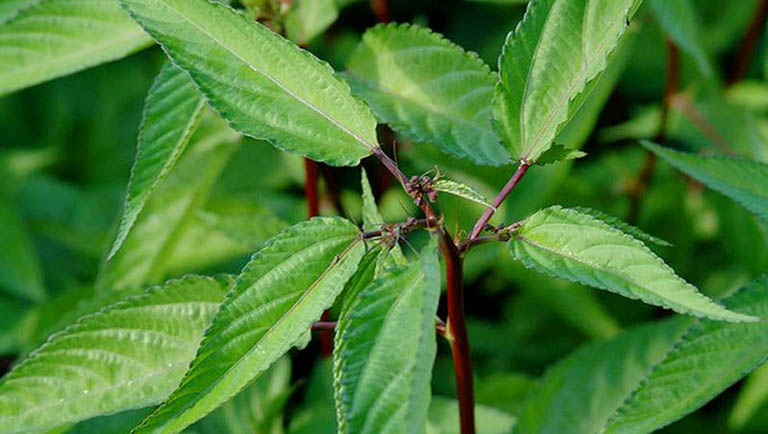
Jute Plant / Jute Leaves
This vegetable has green leaves similar to Muntingia’s leaves with serrated edges, red stems, small yellow flowers, and a bitter taste. We can use it to cook sour soup.
Pennywort ( Rau má )
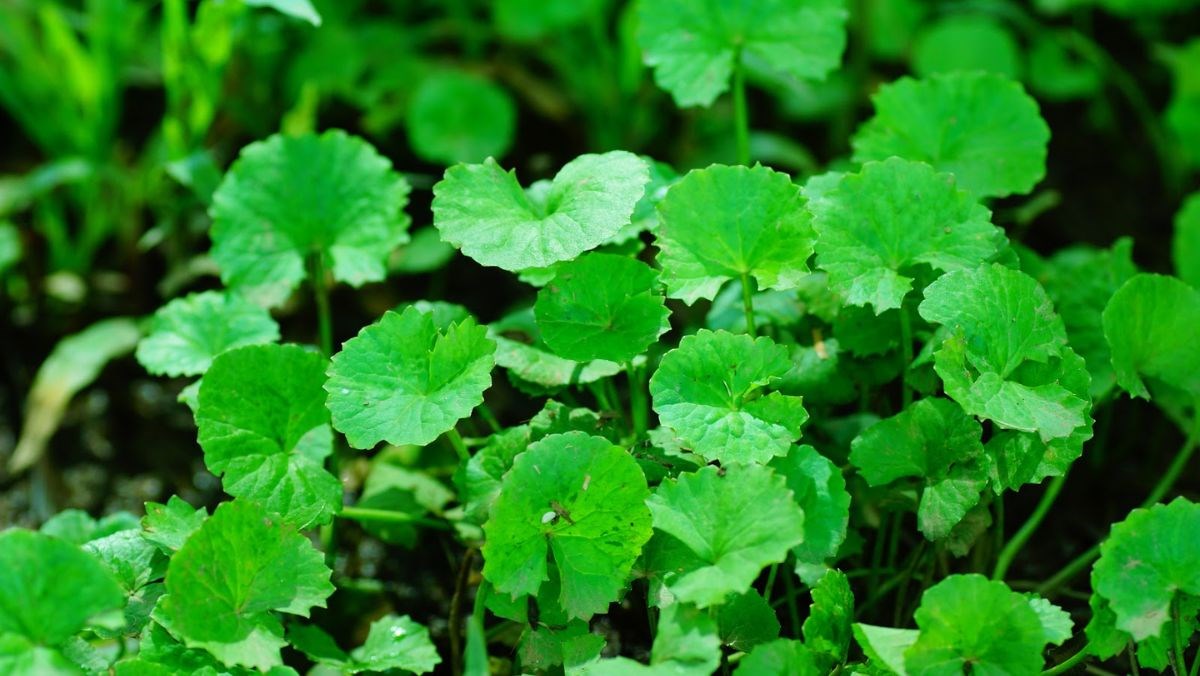
Pennywort
This vegetable has green and round leaves creeping on the ground. Its roots grow from nodes of the stems. It is slightly acidic and used to cook soup and make soft drinks. It has cooling and diuretic effects.
Chinese Plantain ( Mã đề )

Chinese Plantain
This plant has no stem, its leaves grow from roots, it has long stalks and flowers. It is an indispensable ingredient for a tasty sour soup and it can cure long-term cough and eye redness.
Perilla ( Tía tô )
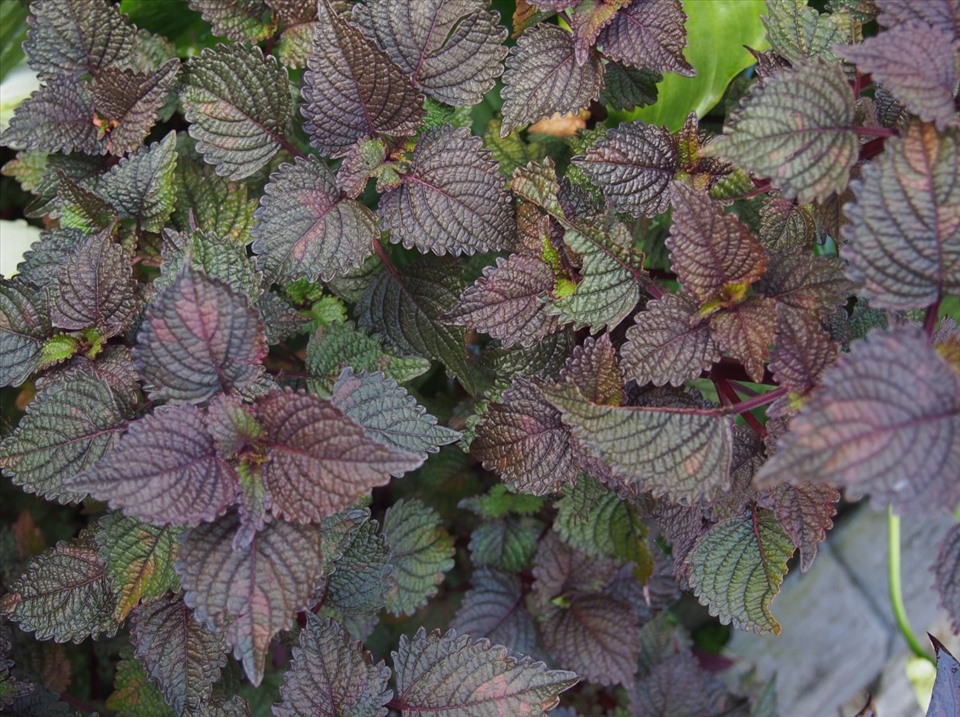
Perilla
This plant has round leaves with serrated edges. Its stems and top leaves are purple.

